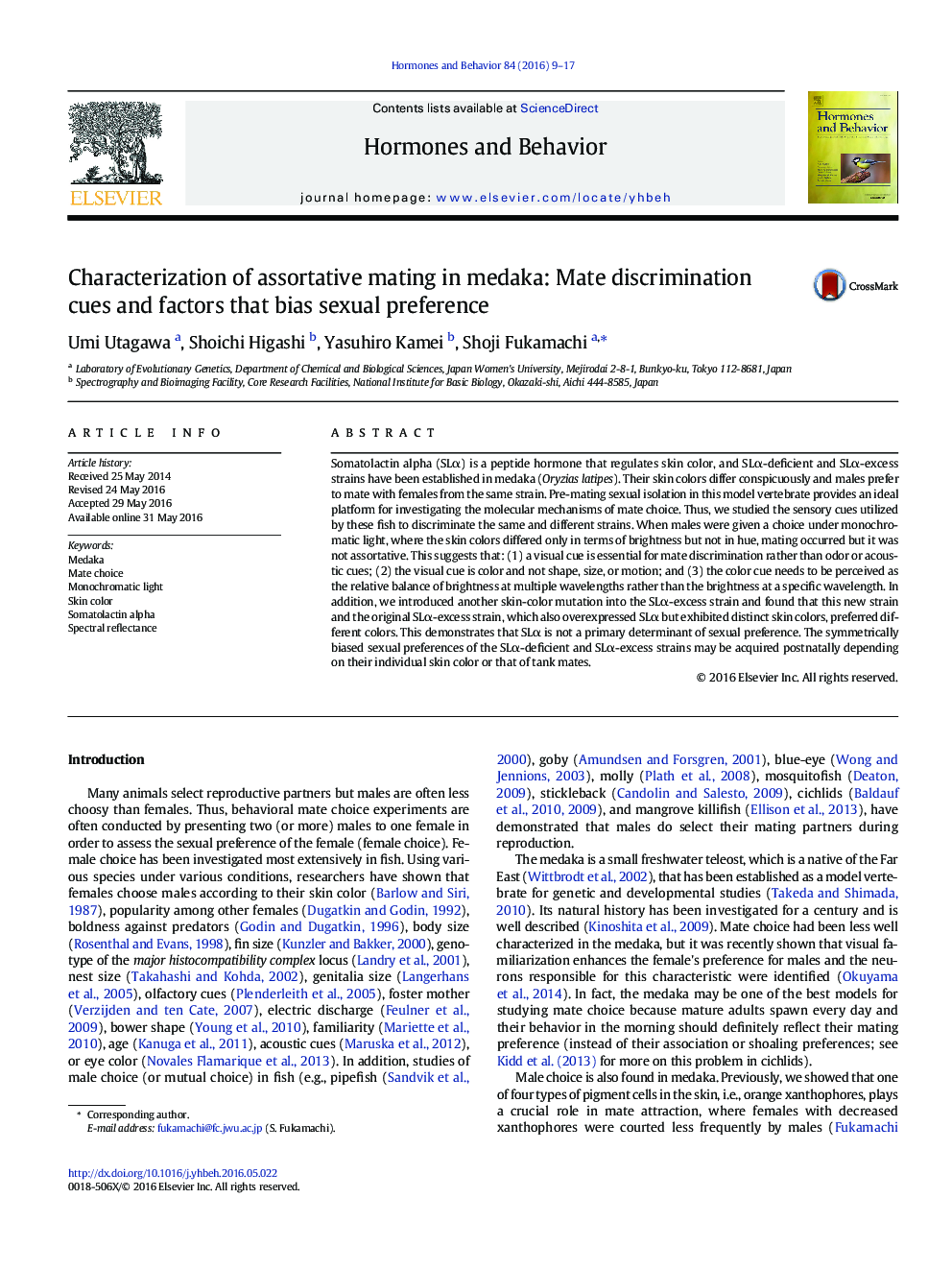| کد مقاله | کد نشریه | سال انتشار | مقاله انگلیسی | نسخه تمام متن |
|---|---|---|---|---|
| 323026 | 540468 | 2016 | 9 صفحه PDF | دانلود رایگان |
• SLα controls skin color in medaka and the color can be quantified based on pigment cells and spectral reflectance.
• The bias of sexual preference is the opposite in SLα-deficient and SLα-excess strains.
• The sexual preference is due to a color (hue) preference and it becomes unbiased under monochromatic light.
• SLα is not a direct determinant of the sexual preference.
• The biased preference depends on the individual's skin color or that of tank mates.
Somatolactin alpha (SLα) is a peptide hormone that regulates skin color, and SLα-deficient and SLα-excess strains have been established in medaka (Oryzias latipes). Their skin colors differ conspicuously and males prefer to mate with females from the same strain. Pre-mating sexual isolation in this model vertebrate provides an ideal platform for investigating the molecular mechanisms of mate choice. Thus, we studied the sensory cues utilized by these fish to discriminate the same and different strains. When males were given a choice under monochromatic light, where the skin colors differed only in terms of brightness but not in hue, mating occurred but it was not assortative. This suggests that: (1) a visual cue is essential for mate discrimination rather than odor or acoustic cues; (2) the visual cue is color and not shape, size, or motion; and (3) the color cue needs to be perceived as the relative balance of brightness at multiple wavelengths rather than the brightness at a specific wavelength. In addition, we introduced another skin-color mutation into the SLα-excess strain and found that this new strain and the original SLα-excess strain, which also overexpressed SLα but exhibited distinct skin colors, preferred different colors. This demonstrates that SLα is not a primary determinant of sexual preference. The symmetrically biased sexual preferences of the SLα-deficient and SLα-excess strains may be acquired postnatally depending on their individual skin color or that of tank mates.
Journal: Hormones and Behavior - Volume 84, August 2016, Pages 9–17
